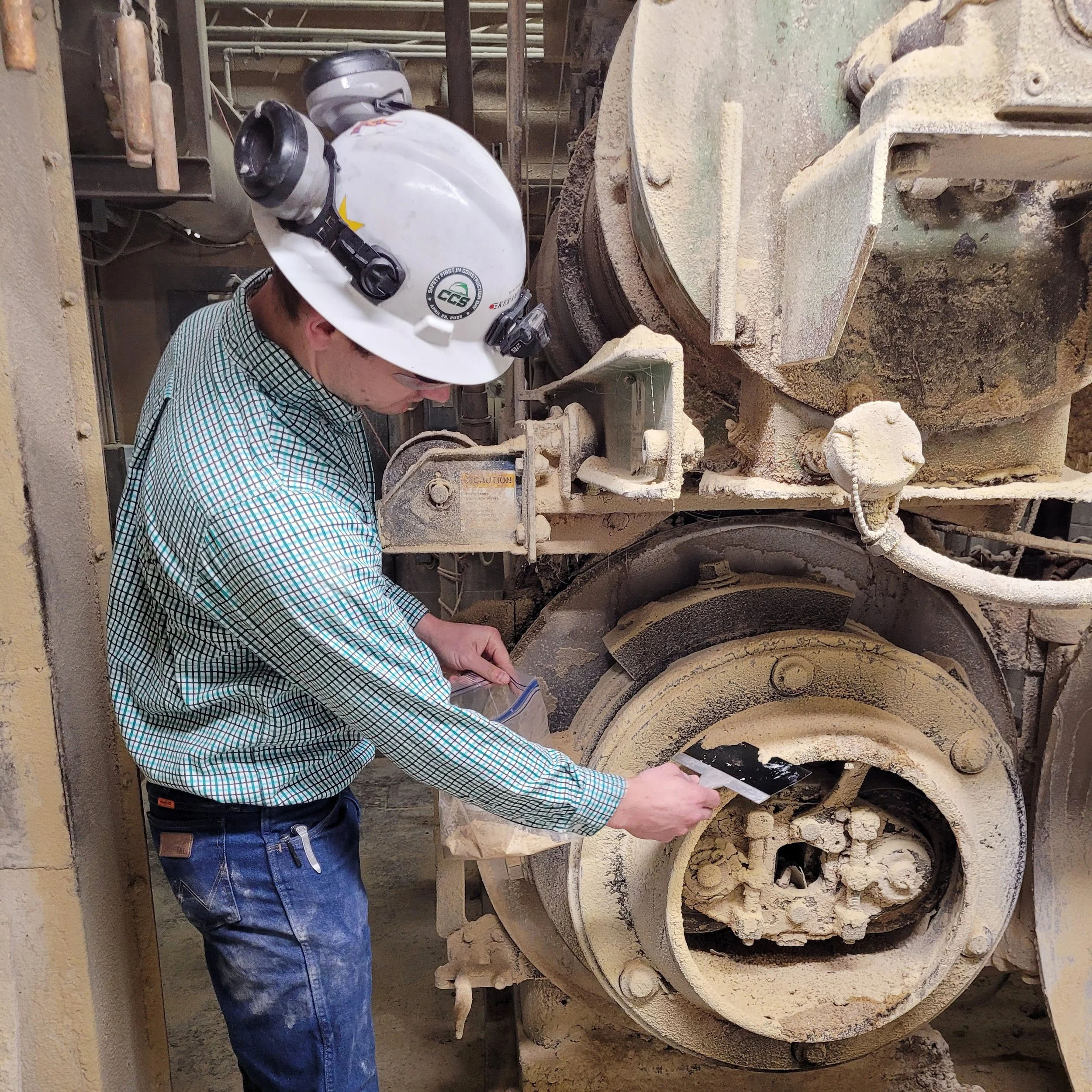5 Key Steps of a Dust Hazard Analysis
/KERAMIDA’s Dan Engling, CIH, CSP, Vice President of Safety and Industrial Health Services performing sampling for a Dust Hazard Analysis at a food processing facility.
In industries ranging from manufacturing to agriculture, combustible dust poses a significant yet often overlooked hazard. To address this concern, the National Fire Protection Association (NFPA) has developed standards aimed at mitigating the risks associated with combustible dust. In this article, we'll explore NFPA's combustible dust standards and highlight the key points of a Dust Hazard Analysis (DHA), an essential part of managing combustible dust hazards.
NFPA Combustible Dust Standards
NFPA's combustible dust standards, particularly NFPA 652: Standard on the Fundamentals of Combustible Dust, serve as a comprehensive guide for identifying, assessing, and controlling combustible dust hazards. This standard provides overarching principles and requirements applicable to all industries handling combustible dust, laying the groundwork for a proactive approach to safety. Additionally, industry-specific standards such as NFPA 61 (Agricultural and Food Processing Facilities), NFPA 484 (Combustible Metals), and NFPA 654 (Combustible Particulate Solids) offer tailored guidelines to address unique hazards associated with different materials and processes.
How to Complete a Dust Hazard Analysis
One of the fundamental components of managing combustible dust hazards is conducting a DHA. A DHA is a systematic evaluation of the potential fire, flash fire, and explosion hazards associated with combustible dust in a facility.
Here are five critical elements of a Dust Hazard Analysis:
Identification of Combustible Dust: The first step in a DHA is identifying all materials within a facility that have the potential to generate combustible dust. This includes powders, granules, fibers, and other particulate materials.
Assessment of Dust Hazards: Once combustible dust materials are identified, the next step is to assess the potential hazards they pose. Factors such as particle size, concentration, and combustibility are quantified to determine the level of risk.
Evaluation of Control Measures: A thorough examination of existing control measures, such as ventilation systems, housekeeping practices, and equipment design, is conducted to identify strengths and weaknesses in mitigating combustible dust hazards.
Recommendations for Risk Reduction: Based on the findings of the analysis, recommendations are provided to enhance safety measures and reduce the risk of fire and explosion. These recommendations may include implementing engineering controls, modifying processes, or enhancing training and education programs.
Documentation and Review: A comprehensive report documenting the DHA process, findings, and recommendations is generated. Regular review and updating of the DHA, a requirement every 5 years, ensure that safety measures remain effective in mitigating combustible dust hazards.
By following NFPA's combustible dust standards and conducting thorough DHAs, industries can significantly reduce the risk of catastrophic incidents associated with combustible dust.
OSHA Combustible Dust Requirements
In addition to NFPA's standards, companies must also consider the requirements set forth by the Occupational Safety and Health Administration (OSHA) regarding combustible dust. OSHA mandates that employers maintain a safe workplace by identifying and controlling hazards associated with combustible dust under the General Duty Clause of the Occupational Safety and Health Act.
OSHA's Combustible Dust National Emphasis Program (NEP) outlines guidelines for inspecting facilities handling combustible dust to ensure compliance with existing regulations. Furthermore, OSHA's Hazard Communication Standard (HCS) requires employers to communicate the hazards of combustible dust to employees through proper labeling, safety data sheets (SDS), and training programs.
Summary
By adhering to OSHA's requirements in conjunction with NFPA's standards and conducting thorough DHAs, employers can establish a comprehensive framework for managing combustible dust hazards and promoting a safe work environment. For immediate assistance, fill out our quick response form or call (800) 508-8034 to speak with one of our experienced health and safety professionals today.
Author
Carson Brown, CSP
Senior Project Manager, Safety & Industrial Health Services
KERAMIDA Inc.
Contact Carson at cbrown@keramida.com
Related Services:
KERAMIDA is a leading health and safety services firm with decades of EHS experience. We help companies manage risk, assure OSHA compliance, and improve health & safety performance. We are experts in silica exposure, H&S program development, ISO 45001 Occupational Health & Safety MS, audits, and training.
KERAMIDA is a leading health and safety services consulting firm with decades of EHS experience. KERAMIDA provides expert industrial hygiene assessment and management of hazards including chemical, physical, radiological, biological, and ergonomic stressors. Work is overseen by CIH certification holders.










